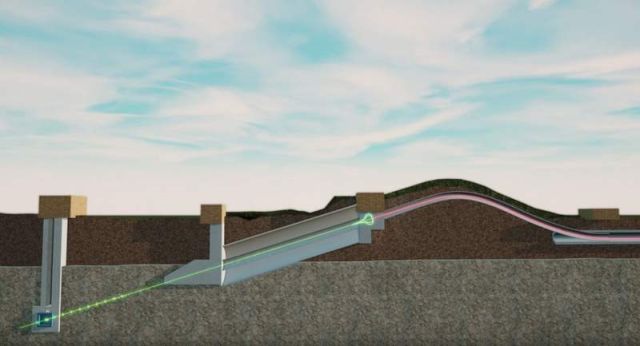Scientists are about to send neutrinos on a 800 mile journey, through the Earth. Watch the video…
Neutrinos created at Fermilab by the LBNF beamline will travel 800 miles (1,300 km) to intercept DUNE’s (Deep Underground Neutrino Experiment) massive, cutting-edge neutrino detector at the Sanford Lab.
The neutrino beam’s path will lead straight through the earth’s mantle.
Low-energy neutrinos can pass easily through soil and rock — about a billion miles (or km) of rock, on average — rarely interacting with the matter. No tunnel is needed for these ghostly particles.
- Do neutrinos exhibit matter-antimatter asymmetries? Answering this question will help unravel the mystery of why matter generation dominated that of antimatter in the early universe.
- DUNE’s observation of thousands of neutrinos from a core-collapse supernova in the Milky Way would allow us to peer inside a newly-formed neutron star and potentially witness the birth of a black hole.
- With the world’s largest cryogenic particle detector deep underground, DUNE will be able to observe proton decay, if it should occur, and seek a relation between the stability of matter and the Grand Unification of forces.
Neutrinos are the most abundant matter particles in the universe, yet very little is known about them.
This animation shows how the Department of Energy’s Long-Baseline Neutrino Facility will power the Deep Underground Neutrino Experiment to help scientists understand the role neutrinos play in the universe. DUNE will also look for the birth of neutron stars and black holes by catching neutrinos from exploding stars. More than 800 scientists from 150 institutions in 27 countries are working on the LBNF/DUNE project, including Armenia, Belgium, Brazil, Bulgaria, Canada, Colombia, Czech Republic, Finland, France, Greece, India, Iran, Italy, Japan, Madagascar, Mexico, Netherlands, Peru, Poland, Romania, Russia, Spain, Switzerland, Turkey, Ukraine, United Kingdom, USA.






Leave A Comment